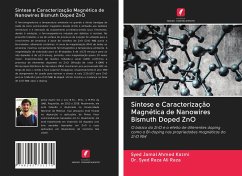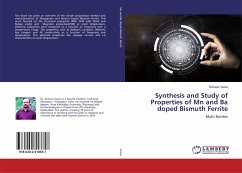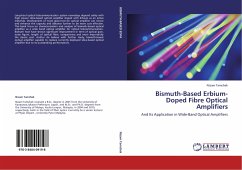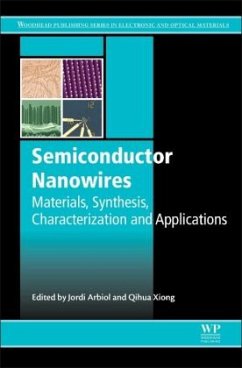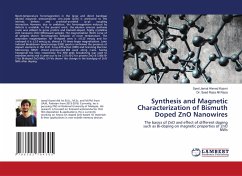
Synthesis and Magnetic Characterization of Bismuth Doped ZnO Nanowires
The basics of ZnO and effect of different doping such as Bi-doping on magnetic properties of ZnO NWs
Versandkostenfrei!
Versandfertig in 1-2 Wochen
36,99 €
inkl. MwSt.

PAYBACK Punkte
18 °P sammeln!
Room-temperature ferromagnetism in the large and direct bandgap diluted magnetic semiconductor zinc oxide (ZnO) is attributed to the intrinsic defects and p-orbital-p-orbital (p-p) coupling interaction. However, due to oxidation, the ferromagnetism induced by defects is unstable. In the present work, the solution process synthesis route was utilized to grow pristine and bismuth-doped, highly crystalline ZnO nanowire (ZnO NW)-based samples. The magnetization (M-H) curve of all samples shown ferromagnetic behavior at room temperature. The saturation magnetization for Bi-doped ones is ±0.25 emu/...
Room-temperature ferromagnetism in the large and direct bandgap diluted magnetic semiconductor zinc oxide (ZnO) is attributed to the intrinsic defects and p-orbital-p-orbital (p-p) coupling interaction. However, due to oxidation, the ferromagnetism induced by defects is unstable. In the present work, the solution process synthesis route was utilized to grow pristine and bismuth-doped, highly crystalline ZnO nanowire (ZnO NW)-based samples. The magnetization (M-H) curve of all samples shown ferromagnetic behavior at room temperature. The saturation magnetization for Bi-doped ones is ±0.25 emu/g and for undoped it is ±2.0 emu/g so, almost a 10 times larger magnetization. Laser Induced Breakdown Spectroscopy (LIBS) spectra confirmed the presence of dopant elements in the ZnO. X-ray diffraction (XRD) and Scanning Electron Microscopy (SEM) shown pronounced 002 peak along c-axis, having hexagonal top face, respectively. The XRD peak broadening was used to estimates stress and it came out to be 2.51x10-2 for pristine ZnO & 5.80x10-2 for Bi-doped ZnO NWs. UV-Vis shown the change in the bandgap of ZnO NWs after doping.




